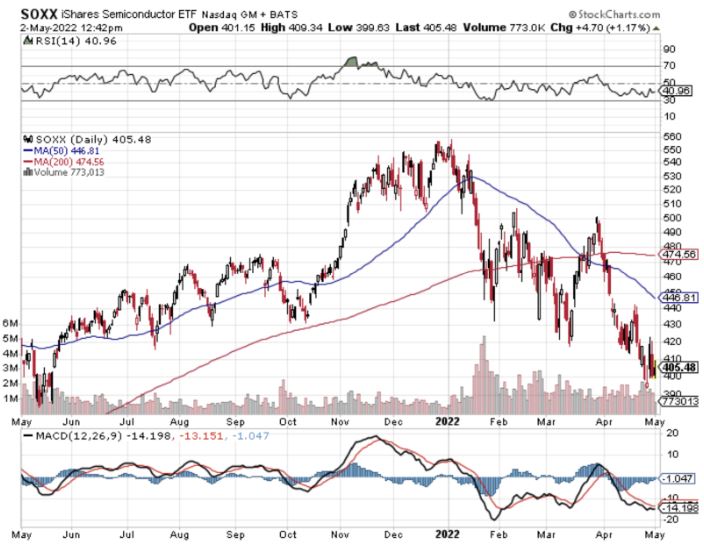Some concerning developments will reveal the dire straights of the semiconductor industry (SOXX) right now.
What I am about to tell you effectively puts semiconductor chips in the doghouse with no end in sight and it’s not a surprise that semiconductor stocks have swan dived the past half-year.
They are quite infamous for the boom-bust cycle, but the new developments have put that thesis on steroids as the ensuing bust seems to be picking up momentum by the second.
What we have is supply-side shock.
The global semiconductor industry is being impacted by a neon shortage.
Neon is a gas that is crucial for making chips. It is used in the lithography step, which involves lasers carving into silicon to develop semiconductors.
Ukrainian neon is a byproduct of Russian steel manufacturing.
Critical Ukrainian companies, Ingas and Cryoin, have halted production unable to operate in this foggy environment of military conflict.
Ukraine is a significant supplier of neon and Ingas and Cryoin accounting for over 60% of the world’s total neon output.
Prices of neon have spiked by up to 500% from December because of the health situation.
In China, prices have also gone up by 400% as well and this can be expected when supply chains are disrupted such as the 600% in the run-up to Russia's 2014 annexation of Crimea from Ukraine.
Ingas produces neon gas out of Mariupol and exports around the world.
This city has more or less been destroyed with 99% of buildings reduced to rubble.
Before the military confrontation, Ingas produced 15,000 to 20,000 cubic meters of neon per month for customers in Taiwan, Korea, China, the United States, and Germany, with about 75% going to the chip industry.
Cryoin, which is based in the southern Ukrainian port city of Odessa, says they have three months of inventory if the factory is damaged.
Right now the factory production has been suspended because the company cannot access additional raw materials for purifying neon.
The government of Taiwan noted that Taiwanese firms had made advanced preparations and have reserve stocks of neon for the near term.
China is also a significant producer of neon gas, but prices there have been gapping up because of arbitrary lockdowns lately.
Clearly, there is a paradigm shift towards a brave new world where supply chains in far-flung territories governed by dictators won’t be able to deliver the “just-in-time” globalized module of manufacturing.
This proves the situation is highly likely to deteriorate than ameliorate and at some point if chip companies don’t suck it up and decide to bite the bullet, generations of products could be shelved because of a lack of materials.
Manufacturing of the entire chip manufacturing process must go back to a domestic operation simply because there will be no way to procure the particular inputs to create the end product.
This will destroy the supply for everything from electronics to other products that need chips causing another leg up in inflation.
What does this mean for the chip companies?
The small chip companies who usually rely on one or two big contracts are about to get massacred.
Missing deadlines is a death knell for small companies as they preside over paltry reserves and cannot endure this type of headwind in the manufacturing process.
At a broader level, expect the boom-bust cycles to show deeper busts with a more delayed snapback along with lower margins.
If that is the bottom line, a major de-risking of semiconductor stocks must happen to reflect this new reality.
Sure, there is a chance that inflation moderates in the next year, but it will still be higher than what chip companies have been used to for the past 30 years.
Chip stocks are in the penalty box until they can work out supply-side issues.


